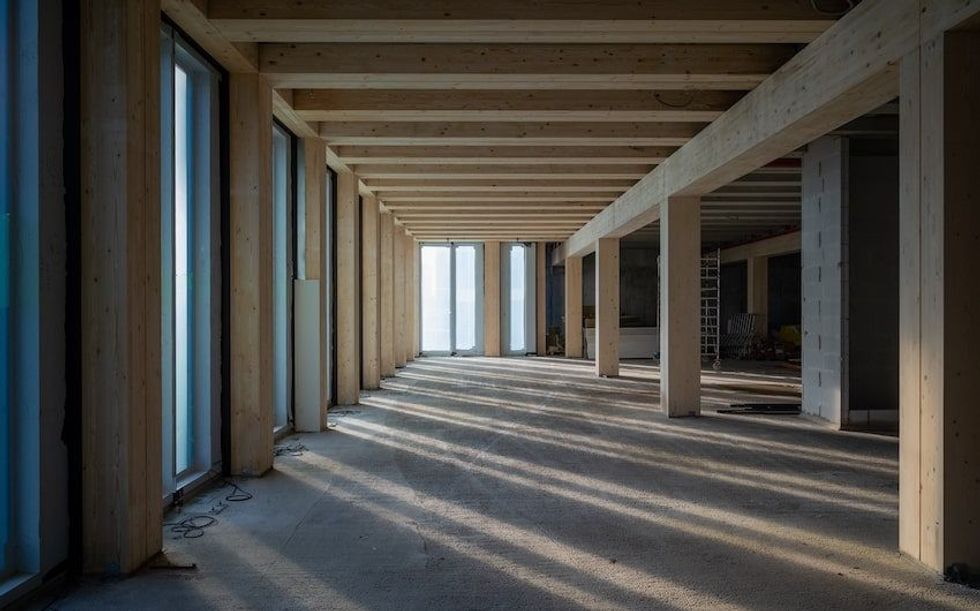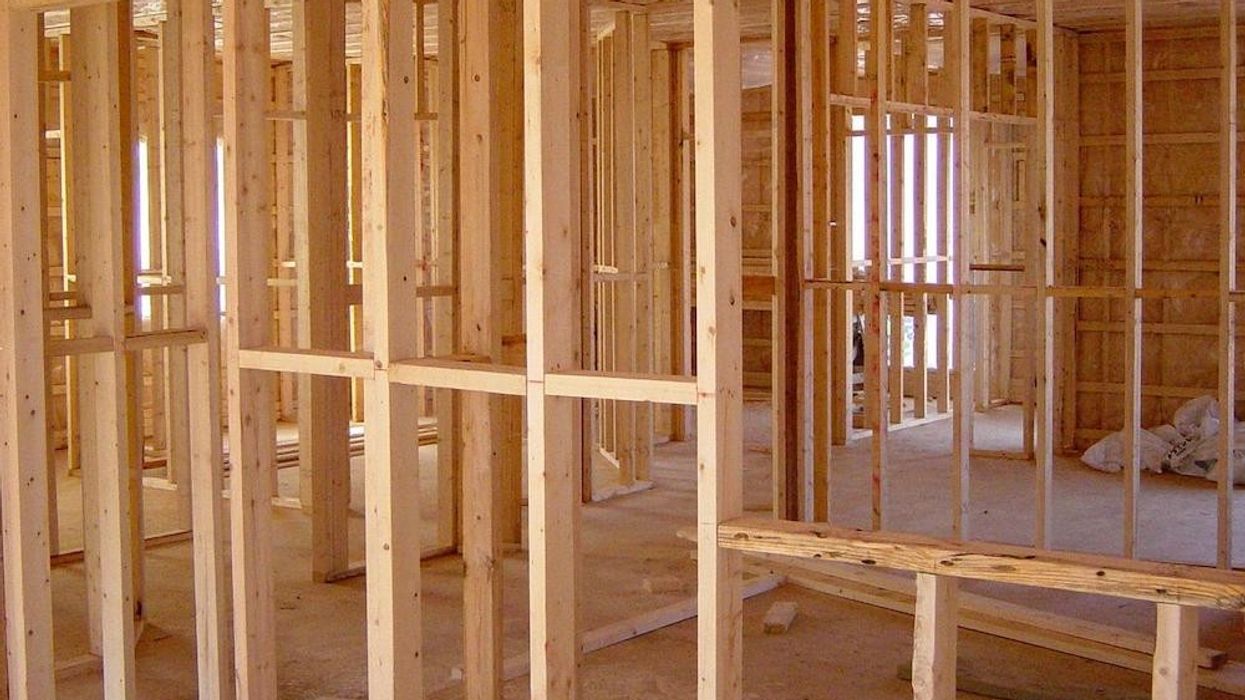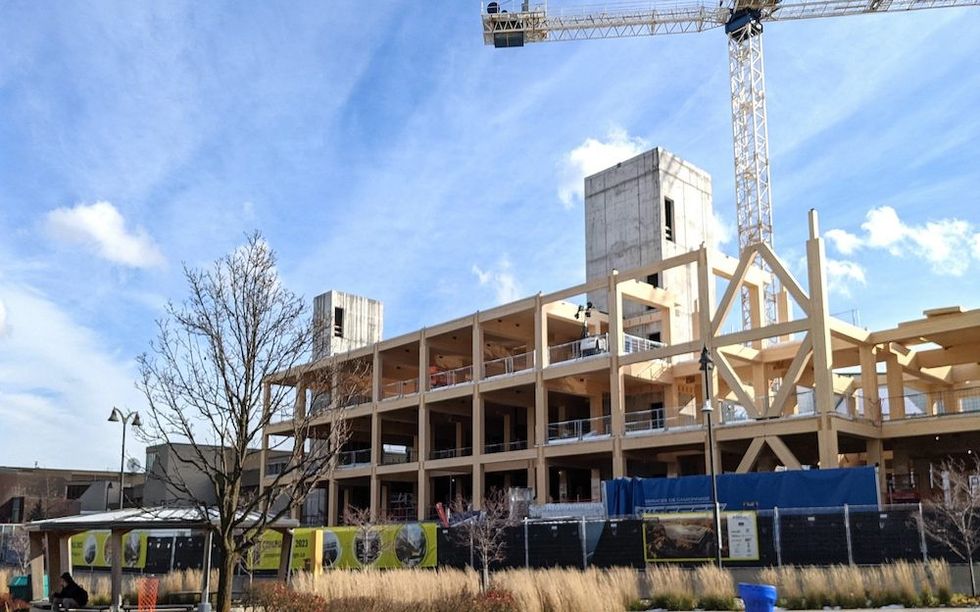Mass timber is having a moment – and one, it seems, that’s going to last. Today, the Ontario government announced that it would amend the province’s building code to permit encapsulated mass timber construction up to 18 storeys. Currently, these buildings are permitted to be up to 12 storeys tall.
For those in need of a little mass timer 101, the term refers to manufactured wood products that meet similar structural, fire protection, and seismic performance as materials traditionally used to construct tall buildings (e.g., concrete and steel). Encapsulated means that the manufactured wood components are covered with fire-rated treatments, like drywall.
The building form has increased in popularity in recent years – something that inspired us to name it our “2022 Design Trend of the Year” – as Canada’s housing providers look to find sustainable and quick ways to add much-needed housing to the market. One of the main selling features is that encapsulated mass timber can minimize the impact of the construction on surrounding neighbourhoods because it’s prefabricated and ready to assemble, reducing construction time and onsite work (and the chance of having annoyed neighbours).
According to a press release, the move to increase height regulations is designed to ramp up the construction of new homes and reduce costs over time, while supporting good-paying jobs in forestry, technology, engineering design, and manufacturing.

“The use of mass timber can help the sector build more homes faster, keep the cost of construction down, and boost our northern economy,” said Paul Calandra, Minister of Municipal Affairs and Housing. “As we work to cut red tape in order to increase housing supply, we’re taking an innovative approach to help our partners get shovels in the ground.”
Encapsulated mass timber construction offers an environmental solution for quieter and faster construction with the same fire and structural protection as other building methods, highlights the release. Of course, Ontario has no shortage of the natural resource beyond its city’s lights.
The Ontario government highlights initiatives like its Ontario Forest Sector Strategy as an opportunity to shift the construction of much-needed housing offsite and into factories. The result is “more efficient and rapid construction,” according to the release.
“Our abundant natural resources and highly-skilled forestry sector are helping to meet the demand for housing across the province,” said Graydon Smith, Minister of Natural Resources and Forestry. “Advanced wood construction will help bring long-term investments to northern communities that will create new, good-paying jobs while increasing housing supply and supporting Ontario’s largest renewable natural resource sector.”
In reviewing this opportunity, the provincial government participated in a national consultation on proposed changes to Ontario’s Building Code when it comes to mass timber. According to the Province, the feedback will be analyzed by a multi-province task group that will share a report of the findings that will be used to implement this change.
"Modern building techniques, including mass timber and modular construction, are part of our multi-pronged approach to boost housing supply and make homes more affordable,” says Rob Flack, Associate Minister of Housing. “Our government will continue to execute comprehensive housing initiatives that include smarter planning, less red tape, housing-enabling infrastructure investments and working with our partners to unlock the potential of high-speed homebuilding technologies to create sustainable communities for everyone."
Ontario’s move comes after Vancouver City Council took its first steps towards creating a new policy program to "remove barriers to mass timber" and encourage more developers to utilize it. The city’s proposed Mass Timber Policy for Rezonings would allow additional height and density through the rezoning process, allowing up to two additional storeys on sites that currently allow for eight to 11 storeys, and up to three additional storeys on sites that currently allow for 12 or more storeys.
By the looks of things, it won't be long before other provinces also ramp up their shouts of "timber."






















